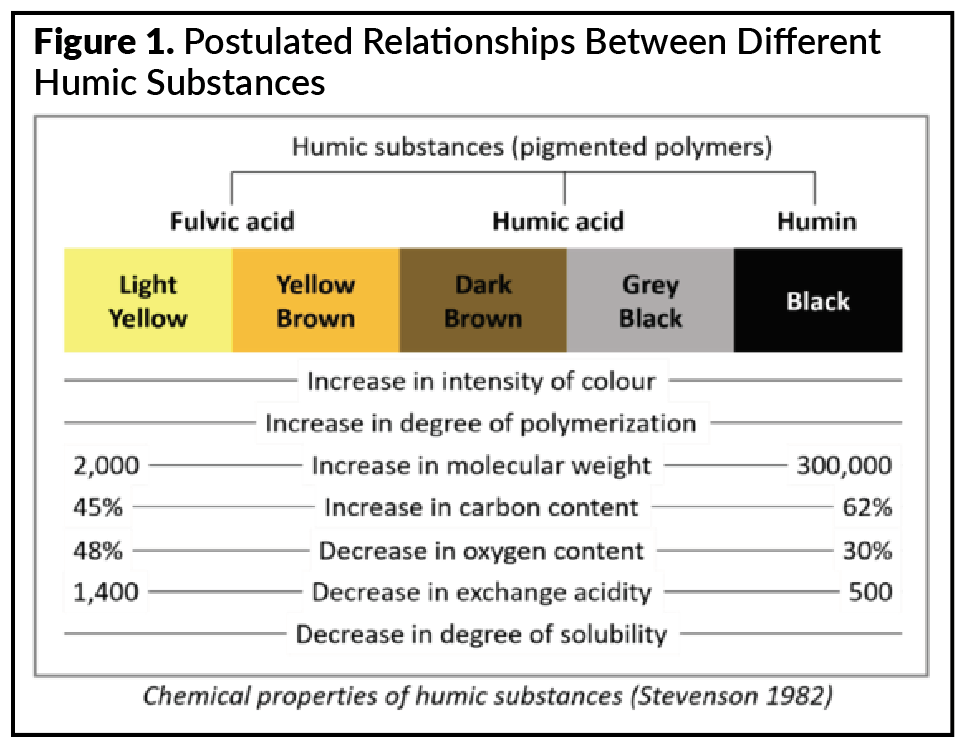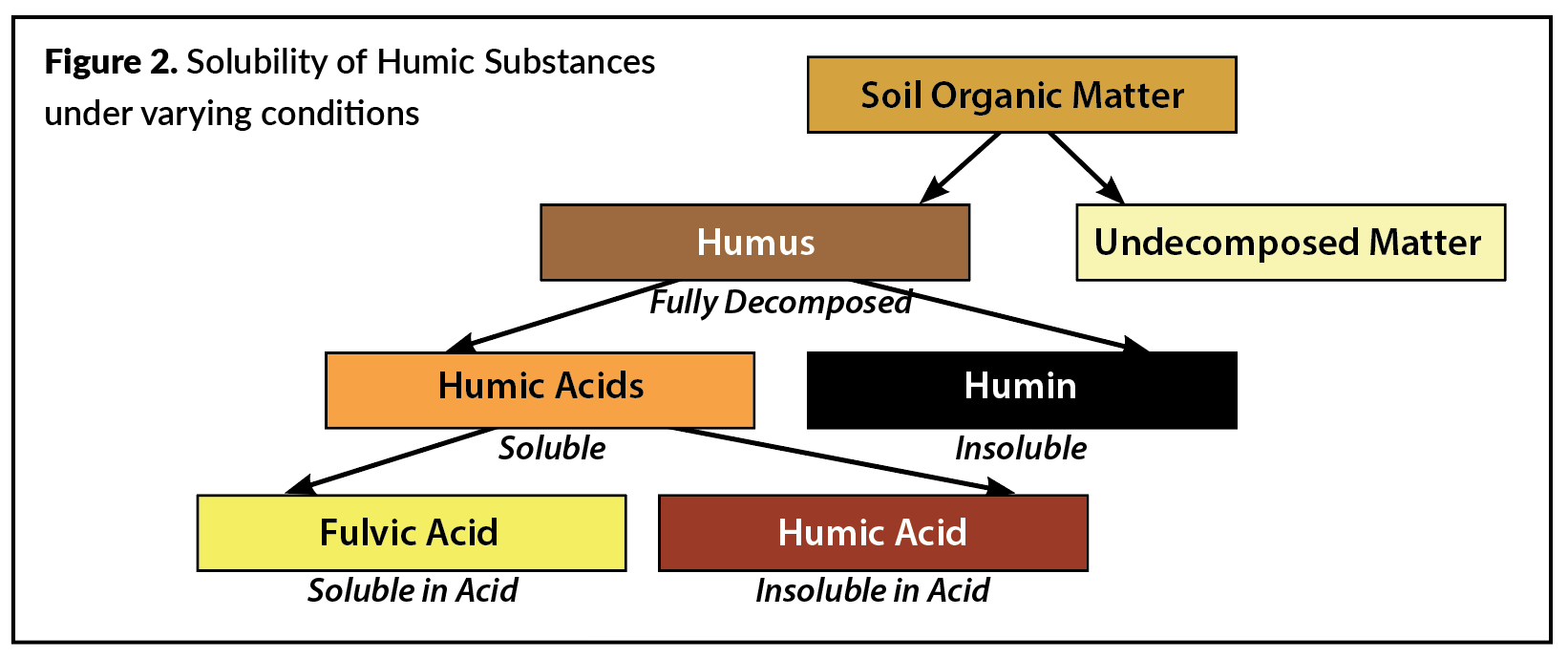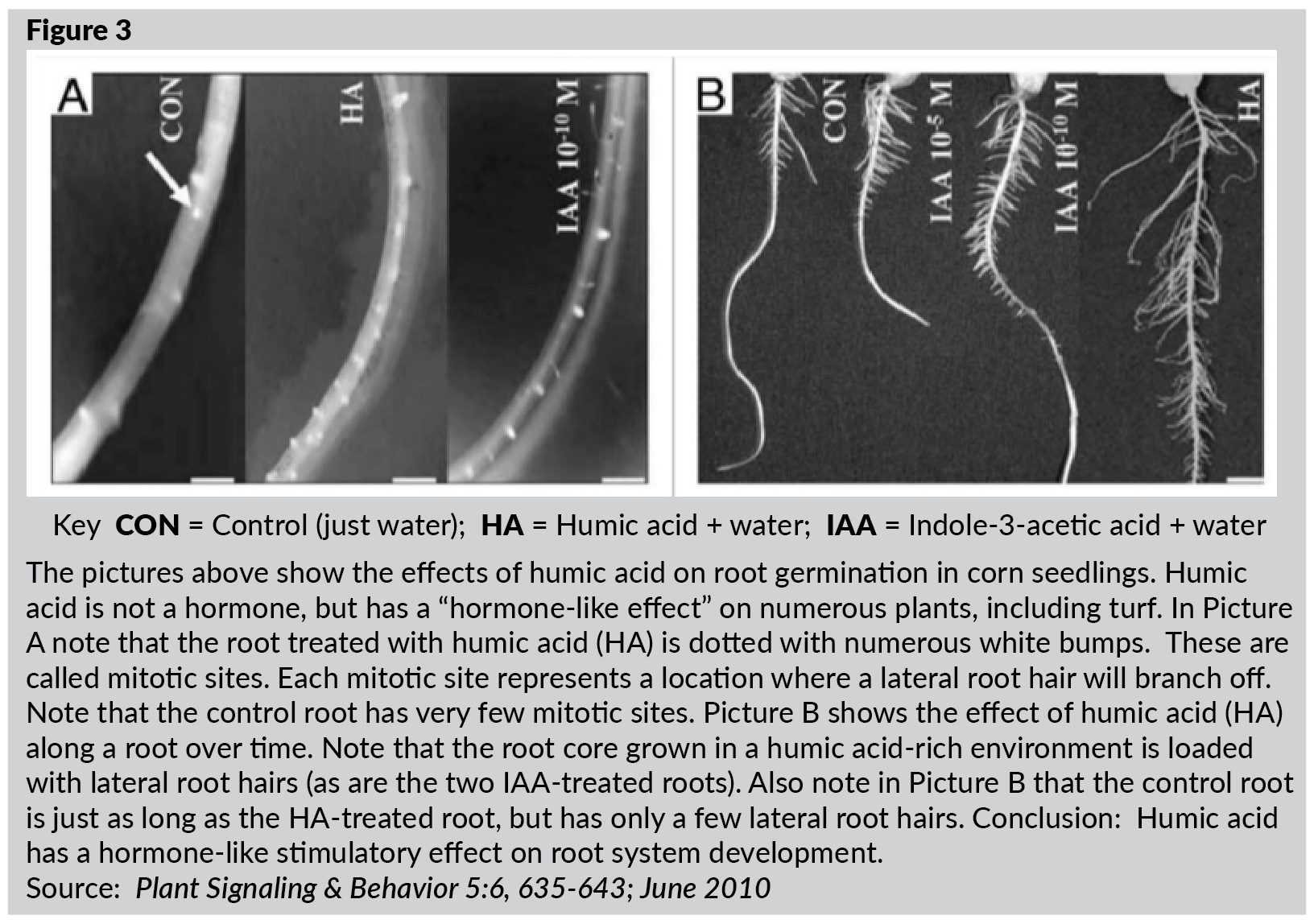THE SCIENCE BEHIND HUMIC SUBSTANCES
Did you know not all humic substances are alike? The category of “humic substances” represents a large variety of humic compounds with very different properties. Some humics are beneficial; others have little or no benefit to plants. Did you know that most states don’t require manufactures of fertilizers
and soil amendments
to tell you which kinds of humic substances are inside their products? Don’t be fooled into purchasing humic-based products that don’t work! Learning the basic science behind humic substances will give you the tools you need to understand which humic-based products have the most value.
WHAT ARE HUMIC SUBSTANCES?
Humic substances are the organic components of soils. Humics are comprised of phenols, lignins, lipids, sugars, esters, quinones and other mild organic acids. They are essentially the biodegraded remains of plant matter due to microbial activity. Humic substances represent the furthest state of decomposition of organic material in the soil.
WHERE DO HUMIC SUBSTANCES COME FROM?
Humic substances come from composting vegetation, peat bogs, manure, and sapropels (organically rich sediments found at the bottom of a river, lake, or marine water body). These humics are considered “short-term processed humics” because the amount of time it takes to biodegrade vegetative tissues in these environments is relatively short (only a few months to a few thousand years). Humic substances can also be found in much higher concentrations in lignite, leondardite, and brown coal. These humics are considered “long term processed humics” because the biodegradation process typically takes place over millions of years. Long term processing of humic substances is enhanced by heat and pressure.
HOW ARE HUMIC SUBSTANCES PROCESSED?
Before humic substances can be applied to the soil, they must first be extracted and purified. Humics may be processed one of two ways: chemically or biologically. Most humic substances are chemically extracted from lignite or leonardite ore via a series of acid and base reactions. The end product is very pure, but the use of caustic chemical reagents makes this process environmentally unfriendly. Chemically processed humics substances typically have a moderately high pH (9-10 avg).
Conversely, biologically processed humic substances are extracted using common soil microbes. With this method, plant material is broken down in a series of biological reactors in a controlled, industrial environment. Biologically processed humic is an environmentally friendly process and has the added benefit of generating a product with a near neutral pH.
WHICH KINDS OF HUMIC SUBSTANCES ARE BENEFICIAL?
When it comes to humic substances, molecule size and solubility are the two largest factors that determine how beneficial humics are to plants. A typical fraction of humic substances found in nature is divided into 3 components: fulvic acids, humic acids, and humins. These compounds are listed in order of molecular size from smallest to largest (see Figure 1). In general, fulvic acids are the most biologically active and beneficial to plants. Smaller size humic substances (such as fulvic acids) tend to be more soluble and lighter in color. Fulvic acids have one more benefit over humic acids and humins; they are soluble in both acidic and alkaline soils. Humic acids are almost as beneficial as fulvic acids except they slightly larger in size, darker in color, and only soluble in alkaline soils. Humins have the largest molecular size of all humic substances. Unfortunately, they provide little value as a soil amendment. Humins are extremely dark, have a thick mud-like texture in water, and are completely insoluble at any pH (see Figure 2).
HOW DO FULVIC ACIDS AND HUMIC ACIDS BENEFIT PLANTS?
Now that we’ve established which humic substances are beneficial (fulvic acid and humic acid) and which have little value (humins), let’s discuss why beneficial humic substances are so valuable to plants. Fulvic acids and humic acids perform three critical functions in plant-soil systems:
- Stimulate Root Development
- Chelate Metal ions in the Soil
- Retain Water in the Soil
1. HUMIC SUBSTANCES STIMULATE ROOT DEVELOPMENT (REFERENCE FIGURE 3)
Studies have shown that when plant roots are in contact with humic substances, those roots grow faster and become more developed. In general, humic substances promote more root cores per plant, and more lateral root hairs per root core. Turf that has a well-developed root system is better able to 1.) Absorb water and nutrients from the soil and 2.) Withstand the stress of root-feeding insects and physical agitation (i.e. foot-traffic).
2. HUMIC SUBSTANCES CHELATE METAL IONS IN THE SOIL
Micronutrient minerals in the soil (such as iron, magnesium, copper, zinc, and manganese) play numerous critical roles in the metabolism of all plants. Without them, plants couldn’t photosynthesize, respire, or produce metabolites necessary for survival. Humic substances can chelate (grab and temporarily hold) metal ions in the soil. When a root encounters a chelated metal ion, the humic substance releases its hold and the ion is absorbed by the root. Some humic substances can hold more metal ions per unit area than others; this means they have a higher cation exchange capacity, or CEC. Sandy soils have very low CEC, which means macro and micronutrients tend to leach quickly from soils. If adding a micronutrient mix to your soil, also consider adding humic substances to reduce leaching potential and increase micronutrient uptake.
Figure 4 is the structure of a typical fulvic acid molecule. Note how fulvic acid works like a “glue” to chelate various kinds of metal ions (micronutrients) in the soil. Most humic substances transfer their metal ions when they adsorb against a root, however some fulvic acids molecules are so small, they can be absorbed by the plant root entirely with the metal ion still chelated.
3. HUMIC SUBSTANCES RETAIN WATER IN THE SOIL
Of all the stresses terrestrial plants face in an average year, none is more prevalent that drought stress. Without water, plant life is not possible. Water drives the circulatory system of plants; everything from macro & micronutrients
to salts, sugars, and metabolites are either dissolved or suspended in water. In times of drought, plants deploy several defensive strategies, however if a plant can’t access enough water to drive its circulatory system, it desiccates and dies. Lower molecular weight humic substances act like a sponge in the soil. Fulvic and humic acids are very soluble; an average size humic acid molecule can hold up to eight times its weight in water! Humic substances help mitigate the effects of drought by retaining more water in the soil. More water means a greener, healthier turf, particularly in the harsh summer months.
For professional fertilizers, humic and AMP-XC™ enriched products available, please visit TurfCare’s online Product Catalog.
For green industry professionals or others interested in ordering Turfcare products, please contact our Customer Service to find a distributor near you.
Pictures:
http://www.mikkat.com.au/images/Biohumates/OM.jpg
http://www.saosis.com/wp-content/uploads/2014/06/fulvic_acid_humic_acid.jpg
http://home.fulvicforce.co.za/wp-content/uploads/2016/10/Humic-substances-classification-1024x770.png
http://www.fulvicforce.co.za/wp-content/uploads/2014/08/FA-chelation.jpg
Turf Care Supply - TurfReport Blog
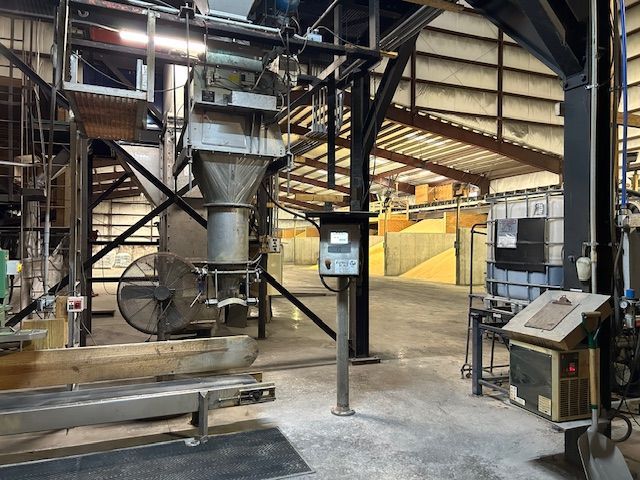
Turf Care Supply, LLC, a portfolio company of Platte River Equity, has officially acquired Beaty Fertilizer, the industry respected Tennessee-based manufacturer and blender of custom granular and liquid fertilizers, as well as combination products. This strategic move expands Turf Care’s manufacturing footprint, adds new product capabilities, and enhances overall production capacity. “The partnership with Beaty Fertilizer marks a major milestone in our journey and an important step forward in our mission to grow, innovate and lead in our industry,” said Mark Mangan, President of Turf Care. “This acquisition is more than just expansion; it’s a powerful opportunity to strengthen our product offerings, broaden our market reach and provide greater value to our customers. By welcoming Beaty into the Turf Care family, we are reinforcing our commitment to excellence and positioning ourselves for an even brighter future.” “We are excited about this next step in the Beaty Fertilizer story. For almost 50 years, our family and our employees have worked hard to serve customers and communities with pride and heart,” said John Beaty, President of Beaty. “Now, we are embracing an opportunity for growth with Turf Care. With our combined know-how and resources, we’ll keep building on what we’ve worked so hard to create and bring even more value to our customers, employees and partners. We truly believe this partnership will keep the Beaty legacy going strong while opening up new doors for growth and innovation.” Tarun Kanthety, Vice President at Platte River, added, “We believe the acquisition of Beaty Fertilizer represents a strategic step in expanding Turf Care’s footprint and product breadth... as it scales and enhances its value proposition to customers.”
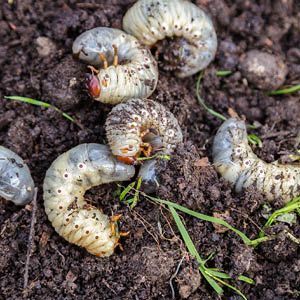
Root out Grubs, Before they Attack Yours! White grubs, the immature stage of several scarab beetles—including Japanese beetles, masked chafers, May and June beetles, and green June beetles—are a major threat to turfgrass across the Southeast. These beetles follow a complete metamorphosis (egg, grub, pupa, adult), with most species completing their cycle in one year. Eggs are laid in early summer, grubs hatch within two weeks, and begin feeding on turfgrass roots through the late summer and fall. May and June beetles differ slightly, with a two- to three-year life cycle and prolonged feeding as third-instar grubs. Grubs damage turf by severing roots, causing grass to yellow, wilt, or lift easily from the soil. Feeding is typically concentrated in patches and worsens during hot, dry weather. Wildlife digging for grubs can create further turf destruction. Healthy turf may tolerate 5–10 grubs per square foot, but damage becomes evident as populations rise or turf is under stress. Early detection and timing are essential. Scouting begins in late June, shortly after adult beetle activity peaks. Monitoring plants favored by beetles can signal egg-laying is underway. Treatment is most effective when small grubs are active—typically from mid-July through early August. For professional turfgrass managers, insecticides containing imidacloprid (Merit®), chlorantraniliprole (Acelepryn®), or trichlorfon (Dylox®) are the most effective tools. The primary months of preventative application of Acelepryn® is from April to end of May and Merit® from April into July - targeting grubs before they hatch. Curative treatments with Dylox® or similar products are applied July through the fall, when young grubs are feeding and most vulnerable. Always follow label directions for optimal application and safety. Timing may vary slightly by regional seasonal needs. Turf Care Supply has a variety of professional TCS Growstar insecticide fertilizers available to protect your turf and prevent grub damage, before it starts. Click on the button below to view products, contact your sales rep for addition TC Growstar products available.
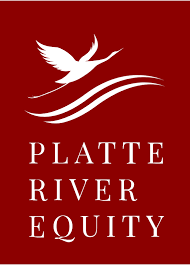
Platte River Equity Portfolio Company Turf Care Supply, LLC Acquires Agri-Nutrients, Inc. Brunswick, OH , October 9, 2024 – Platte River Equity (“Platte River”) portfolio company Turf Care Supply, LLC (“Turf Care”) is pleased to announce its acquisition of Agri-Nutrients, Inc. (“Agri-Nutrients”), a manufacturer and blender of custom granular fertilizers for the turf & ornamental (“T&O”) industry. This strategic acquisition provides Turf Care with an established presence in the south-central United States, an enhanced product portfolio and additional manufacturing capacity. “This acquisition represents much more than a business transaction; it is a strategic step forward in expanding our reach and enhancing our customers’ growth. By bringing Agri-Nutrients into the Turf Care family, we are broadening our product portfolio, expanding our market presence and further positioning ourselves as a leader in providing innovative solutions for our customers,” said Mark Mangan, President of Turf Care. “We are excited about joining the Turf Care team,” said Jim Montgomery, President of Agri-Nutrients. “At Agri-Nutrients, our core values center around customer service and product innovation, and we are confident that this combination will allow us to better serve the needs of our customers.” “Platte River welcomes the Agri-Nutrients team to Turf Care. This transaction underscores our long-term commitment to fostering growth through both organic and inorganic initiatives across the Turf Care platform,” said Tarun Kanthety, Vice President of Platte River. “The partnership with Agri-Nutrients strengthens Turf Care’s value-added offering, creating additional growth opportunities across the combined customer base.” B&A Corporate Advisors served as the exclusive financial advisor to Agri-Nutrients. About Agri-Nutrients Founded in 1992 and based in Catoosa, OK, Agri-Nutrients is a manufacturer and blender of custom granular fertilizers for the T&O industry, predominantly selling into the lawn care, sports turf and golf course end markets. About Turf Care Supply Established in 1974, Turf Care Supply is one of the largest formulators and blenders of urea products to the T&O market. Turf Care has a comprehensive product portfolio of fertilizers, combination products (herbicide/insecticide), soil amendments and enhanced efficiency fertilizer ingredients. Turf Care's products are sold to distributors and blenders serving the commercial, residential and golf end markets. Turf Care operates four manufacturing facilities strategically located throughout the eastern U.S. About Platte River Equity Founded in 2006 and based in Denver, CO, Platte River Equity is a private equity firm focused on investments in established lower middle market operating companies within targeted industrial sectors where it has substantial operating and investing experience. Platte River utilizes prudent capital structures in order to invest in future growth opportunities and withstand changing economic environments. The firm also provides significant ongoing support to its portfolio companies through dedicated resources across functional areas. The firm has raised funds with committed capital in excess of $1.6 billion and is currently investing out of its fifth fund. The Platte River team is the largest collective investor across its funds, deeply aligning the firm with its investors and portfolio company management teams.


